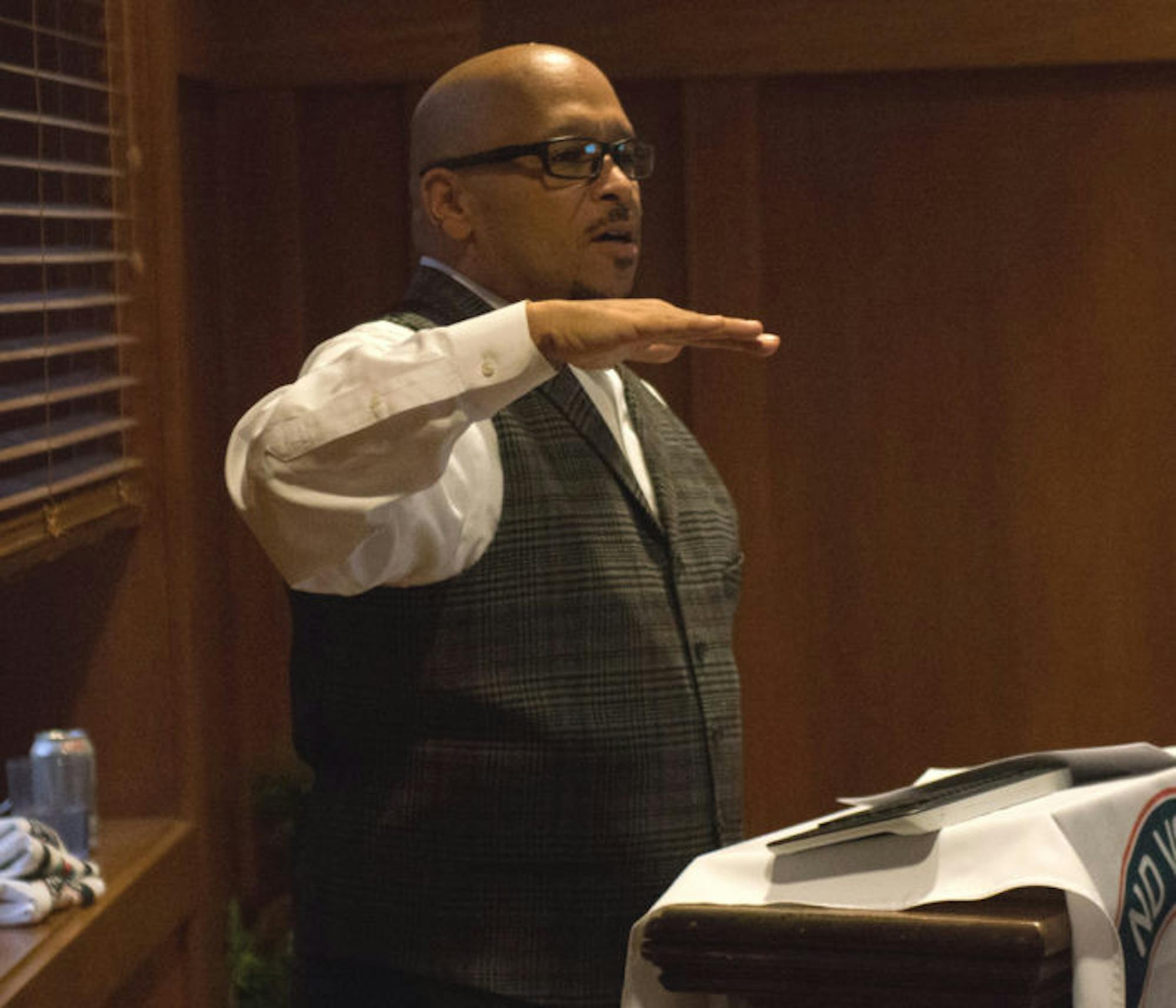The Center for Social Concerns’ ND Votes kicked off its first “Pizza, Pop and Politics” event of the semester Wednesday night in the Geddes Coffee House. The panel discussion, titled “Unpacking the 2018 Midterm Elections Results: What We Know and What it May Mean” featured political science professors Darren Davis, Christina Wolbrecht and David Campbell presenting different aspects of the elections.
Davis spoke about the presence of racial resentment in the recent midterm elections.
“White Americans are angry and anxious, and this was evident and exploited in the 2018 midterm elections,” Davis said.
He said that explicit racial prejudice cannot fully explain this phenomenon; instead, he said, it is racial resentment, the idea that African Americans and minorities make illegitimate demands on the political system.
“This deep fear and anxiety, this racial resentment, comes from the thought that the white way of life and status quo is changing,” he said.
Davis said racial resentment is a “system justifying belief” in which the individuals who benefit most from the status quo are more sensitive to threats to the system and are most likely to defend it.
Racial resentment was present in specific elections during the midterm, Davis said. There was an overt appeal to race and ethnicity in races such as the Florida and Georgia governor races, as well as in ads from Trump himself.
“I have never seen a current president air advertisements during the midterm elections until Trump,” he said. “Trump’s controversial migrant caravan ad was trying to activate that sense of fear.”
Most important, Davis said, “racial resentment and system justifying beliefs are alive and functioning in politics today from the president down in stoking anxiety.”
Wolbrecht spoke on the impact of women candidates and women voters in the midterms.
She said there was a major spike in women running for Congress and winning seats. Most of this nomination jump came from female Democrats, who have had more female nominees than the Republican Party for the past 30 years, Wolbrecht said.
“The only thing slowing women is men already sitting in the seats,” she said. “Almost 200 women ran and much fewer were elected, that is just the reality of incumbency in the U.S.”
Wolbrecht showed recent headlines and magazine covers attesting that many women were running because they were inspired by Trump, wanting vengeance against his actions.
“In reality,” Wolbrecht said, “most women said, ‘no, it’s not about Trump.’ Many ran because they cared about their local community, health care or other policy concerns.”
In regards to the female voter, Wolbrecht emphasized the diversity of this demographic.
“There is no female voter,” she said. “Women are as diverse as, hold onto your seats, men.” However, she said the biggest difference this election was that women, especially women under 40 and those who are college-educated, were more likely to vote for the Democratic party.
Campbell spoke about turnout in the 2018 midterm elections. The 2018 midterm elections had the highest turnout in a century, and the increase was thanks to “a whole bundle of things,” he said.
“When it’s not just a boring public service announcement, but young people like yourselves encouraging other people to vote, that is when there is success,” Campbell said.
However, he said this turnout spike needs to be put in context. The 2018 turnout almost reached 50 percent, and these numbers are not unprecedented — this number looks even worse on a 0-100 percent scale.
“Historically, it is not as high as it could be,” he said. “America’s exceptional, I guess you could say.”
His joke was in reference to a chart of voter turnout among other democratic, developed nations where the U.S. ranked nearly dead last, having only stronger turnout than Switzerland.
The 2018 midterms were expected to have high turnout and they did have a spike — the 18 to 29 age group clocked in at a high of about 31 percent.
“Kids are turning out but they are still slackers compared to their parents and grandparents,” Campbell said.
Back in the 1990s, the 18 to 29 age group voted very evenly between the two major parties, he said. Since then, young people have grown increasingly Democratic, with a major Democratic increase happening in the 2018 elections.
“I am troubled by this increasing party split among young people,” Campbell said. “I am troubled that we have parties that are divided by so many social divisions, and adding age to that mix will exacerbate party polarization.”
Campbell encouraged Notre Dame Republicans to remain active in their party — he said the current divide is not healthy and he hopes the Republican party can move away from the fringes and back to the center right.
Panel unpacks the 2018 midterm elections
Noah Cha
Political science professor Darren Davis discusses racial resentment in the U.S. 2018 midterm elections.









